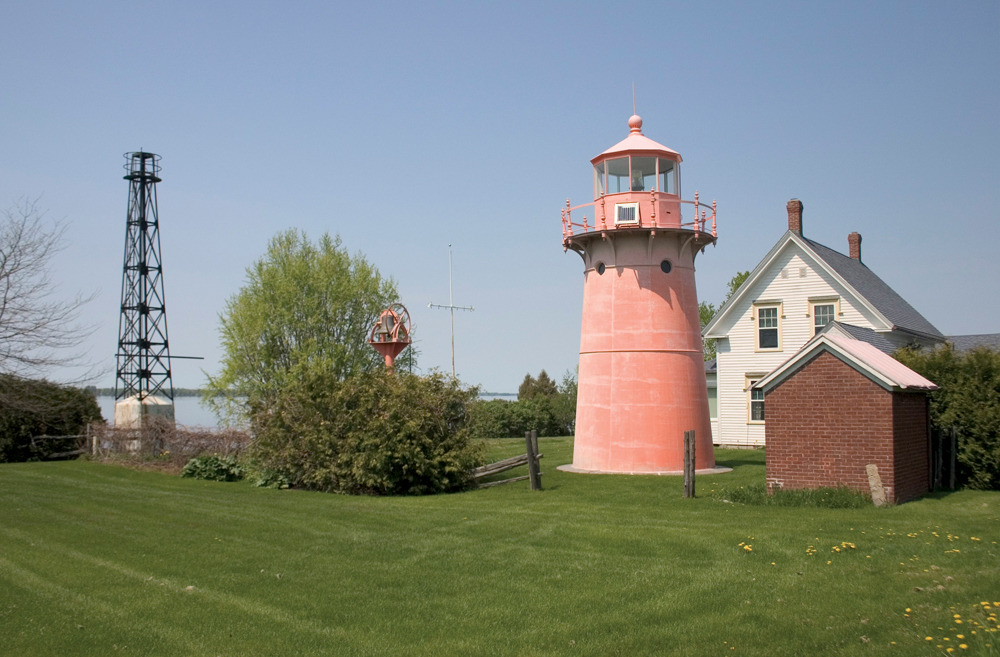
Accessibility: ![]()
Geographic coordinates (north light): 44° 54' 19" N 73° 20' 39" W
Nearest town: Isle la Motte. Located at the northern end of Isle la Motte, northern Lake Champlain.
Established: 1856. Present lighthouse built: 1880. Deactivated: 1933. Relighted: 2002.
Height of tower: 25 feet. Height of focal plane: 46 feet.
Previous optic: Sixth-order Fresnel lens. Present optic: 300 mm.
Beginning around 1829 at Isle la Motte, a lantern was placed in an upper window of a stone house belonging to Ezra Pike Jr. to aid local navigation. The house still stands and is a private residence. In 1856, the federal government erected a stone pyramid with a lantern. Increased shipping traffic in the area made a more permanent lighthouse a necessity.
The extant cast-iron lighthouse was built in 1880 along with a new dwelling. Wilbur F. Hill was keeper of the old beacon starting in 1871, and he remained at the new lighthouse station until 1919, serving forty-eight years as keeper. During his years at Isle la Motte Light, Keeper Hill received awards for having the best-kept station in the district. He also maintained a 100-acre farm nearby. Hill retired from lighthouse keeping about six weeks before he died.
A skeleton tower with an automatic beacon replaced the lighthouse in 1933. In 1949, the property was bought by the Clark family from their dentist, who had purchased it from the Coast Guard.
In 2001, the Coast Guard began looking at the possibility of reactivating some of Lake Champlain’s lighthouses. They worked closely with Lockwood “Lucky” Clark and his family, owners of the station, to prepare for a relighting. On the evening of October 5, 2002, the lighthouse returned to service at dusk. As the light came on at 6:18 p.m., a cannon blazed and Lucky Clark vigorously rang the bell near the lighthouse.
The light station is a private residence and is closed to the public; you’ll need a private boat or charter for a good view. The lighthouse, painted orange some years ago, has faded to a pinkish rose color, or as the locals call it, “Nantucket Red” or “salmon.”
Fascinating Fact 
Isle la Motte was the site of the first French settlement in Vermont. The Shrine of Ste. Anne stands today where the French under Captain Sieur de La Motte built Fort Ste. Anne in 1666.